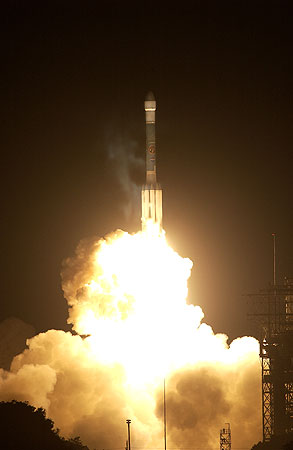NASA Spitzer Space Telescope Moves from Cryogenic to "Warm" Mission
The NASA Spitzer Space Telescope's cryogenic mission is over. At approximately 2:30 PM EDT on Friday, 15 May 2009, precisely as expected, the last of the facility's liquid-helium coolant evaporated. The telescope and instruments began quickly to warm up from the temperature, 1.5 degrees above absolute zero, at which they have been kept for the 5.7-year duration of the mission. The temperature is expected to level off at about 30 degrees above absolute zero, at which the observatory's Infrared Spectrograph and Multiband Imaging Photometer, and half of the detector arrays in the Infrared Array Camera, can no longer function.
The Infrared Spectrograph (IRS) was in use as the helium ran out. University of Rochester Professors Dan Watson and Bill Forrest are members of the team that designed and built the IRS under the leadership of Professor Jim Houck at Cornell University. Watson and Forrest have been among the most frequent users of the IRS.
Now Spitzer moves into a several-year phase called the "warm" mission, during which it will continue to operate with the two detector arrays that remain working in the Infrared Array Camera (IRAC). These two detectors, sensitive to infrared light at wavelengths 3.5 and 4.5 microns, were developed for the observatory by University of Rochester Professors Judy Pipher and Bill Forrest, who are members of the team that designed and built IRAC under the leadership of Dr. Giovanni Fazio of the Harvard-Smithsonian Center for Astrophysics, a former University of Rochester physics professor. Pipher and Forrest will continue serve as members of the IRAC team for the warm mission and to use the camera in their scientific projects.

(Credit: NASA)
